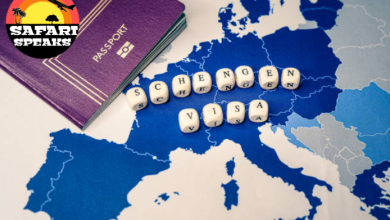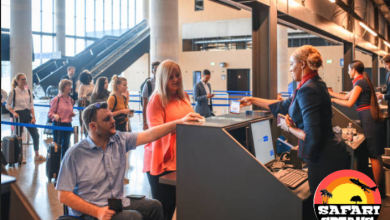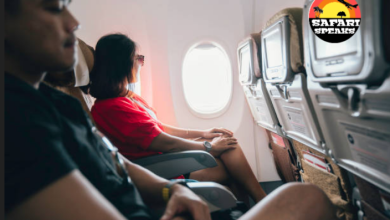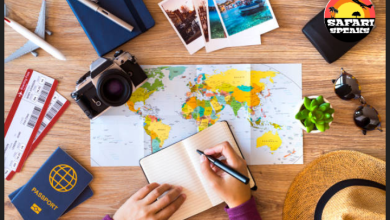Wise Travels: Essential Packing Tips To Aid Your Travel

Essential packing tips to aid your travel is one blog post that every travelers both novice (first timers) and frequent or regular travelers. It might be very wise to take these precautions so as to help you to make your travel easier, lighter and safer.
The wisest travel advice we have heard is to bring half the clothes and twice the money. Packing light is the first law of carefree travel. Yet it can be difficult, when you are actually packing, to leave behind that special sweater, those dressy clothes, that extra jacket.
It is as if you want to take a little bit of home along with you for security. Before you know it, you have got an unbelievable heavy, bulging, unwieldy bag.
Once on your trip, the weight of your bag becomes much more of a concern to you than the actual items you have brought. Rushing to catch a train, walking an extra mile to your hotel because you could not find a bus, constantly counting your bags to make sure you have everything – these are just a few of the times you will curse the extras and wish you had been more disciplined.
Not only will you be less exhausted if you pack light, but you will also be much more flexible, mobile and spontaneous. One of us has a particularly fond memory of walking across a South Indian mountain range for a day, instead of having to take a grueling three day trip the long way around – an option only possible because her luggage was just a small rucksack.
What To Bring Along With You While Traveling
Do not buy a new wardrobe before you go. Save the money for your trip. it can be very annoying to drag around clothes that you might not wear after all. Bring along with you only your favourite clothes that match with the weather of the place you are going to. Your clothes should be comfortable and easy to help you adapt to the weather and climate change.
The most important items in your luggage, we believe, are your shoes. Make sure they are study, with non-slip soles and well broken in ahead of time. Have a cobbler replace heels and insert arch support, if necessary. Give them a treatment with mink oil or other water proofer.

Even your dress shoes should be familiar and comfortable. You never know when you might find yourself on a romantic moonlit stroll along the Seine – an experience that would be ruined by blisters or sore feet.
The only item we do recommend purchasing just before you leave are undergarments and socks, which can be hard to obtain on a trip.
If you are traveling with another person, aim to go light enough so that each of you can carry all the luggage if necessary. This will be helpful, for example, if you have to find seats on a crowded train. One of you can go ahead to find seat while the other follows the bags.
Do not pack an article that you rarely wear, thinking you might be on the mood to wear it. It will surely stay at the bottom of your suitcase the entire trip.
Do not bring expensive clothes that requires dry cleaning, unless you are very confident that the service will be good. Bring things you can was and iron yourself, either by hand or by laundromat, or that can entrust without too much concern to a launderer.
Choose your clothes for their lightness and washability. You want things that will stay wrinkle free, wash easily and take up a tiny amount of space.
Choose your clothes around one main coordinating color. Make sure each of your pants or skirts can be worn with each of your shirts or blouses.
Scarves, belts and costume jewelry, which do not take up much room, can change the look of an outfit from day to day or from day to evening.
You may notice women in other countries dress up more than they do in your country, especially for dinner in a restaurant. Although pants are acceptable dress for women in the world today. You may bring along at least one skirt if you are expecting to eat in a restaurant. Dressing with dignity is the key in a foreign culture.
If you will be encountering different temperature extremes, plan to layer your clothes. A turtleneck shirt sweater shell combination will be warm enough for most climates. The shirt alone will suit warmer weather and the shell will be enough for a cool evening.
Similarly, if you are hiking, plan to dress in layers. A turtleneck, flannel shirt and nylon windbreaker will be just effective, more versatile and much less bulky than a sweater.
Bring plenty of cotton or wool socks if you expect to be doing a lot of walking.
If you are traveling in winter, determine where you will be spending your time. If outdoors, you will need a warm coat, but if you are attending a seminar or otherwise planning to be indoors most of the time, you might get by with a raincoat and a warm sweater.
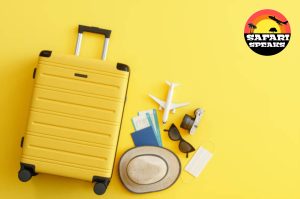
How Do You Pack for an Entire Year of Travel?
1. Put plastic garbage bags on the bottom of the suitcase and between different layers to reduce wrinkles.
2. Stuff socks into your shoes and put the shoes in a plastic or cloth bag.
3. Roll up sweaters and undergarment and fit them into the corners of the suitcase.
4. Fold shirts, pants, dresses and skirts as little as possible and as close as the seam as possible with buttons buttoned and zippers zipped.
5. Place the heaviest things on the bottom of your bag and the more wrinkle-prone items on top.
6. When you pack and repack, out things in the same place each time, so that you will be able to extract specific items quickly when needed.
7. It will be nice to mark your suitcase in some distinctive way – with colorful tape, for instance, so that others cannot confuse your bag with theirs.
8. Whether you are traveling by plane, train, bus or car, a carry-on bag makes sense, as soon as a place to keep small, fragile, valuable and frequently needed items.
9. Be sure to bring a cover-up if you are spending a lot of time in the beach or poolside.
10. Many travelers recommend fastening a luggage strap around each suitcase, both to make it distinctive from other similar bags and to discourage pilfering.
The following items should never be checked in a suitcase to travel in the baggage compartment:
1. Traveler’s check
2. Business documents
3. Negotiable stocks and securities
4. Medicines
5. Expensive jewelry
6. Musical instruments
7. Eyeglasses
8. Matches or cigarette lighters
9. Any liquid substance.
What Are Carry-Ons
Carry-on bags are small fit bags that a traveler should tarry along with for easier access of some most needed materials for personal use. A carry-on bag must fit under your seat or if it is soft and filled with clothing only it may go into the overhead compartment.
Parents traveling with infants or toddlers are allowed to bring a diaper-changing bag and a stroller. If you feel you have enough to deal with already, with the child and a stroller. Also, try to combine the baby’s necessities and yours in one carry-on bag.
In your carry-on bags, you should have the necessary essential of life that can aid travel for almost the first two hours of your trip, in case your suitcase does go astray. This would include toilet articles, medications and a simple change of clothing.
Other Items The Carry-on Bag Should Contain
1. Camera and film
2. Flashlight
3. Phone Chargers
4. Documents
5. Needs for first night
6. Contact lens supplies
7. Lip balms or skin moisturizer
8. Slippers socks
9. Earplugs or ear shade
10. Nasal decongestant
11. Travel alarm clock set to destination time.
Many women travelers claim that a full skirted traveling dress is most comfortable and shows fewest wrinkles. Knits are also ideal. A jogging suit is very comfortable to wear on a plane. Just be sure, though, to have a change of clothing in your carry-on bag. Someone we know wore a hot pink sweat-suit for her flight to a conference in Europe, and her luggage went astray. She attended each of the seminars in the same pink outfit, because she had nothing else to wear.
Matters made worse because sweat suit materials dries very slowly. After washing her outfit one night, she tried to hurry things up by using the pressing iron. She succeeded in burning a hole in her only outfit.
Essential Packing Tips To Aid Your Travel
Well before your trip, examine your luggage to be certain it would hold up to the trip. it should be sturdy and rugged. Make sure zippers and handles are in excellent condition. Check seams for signs of strain. We think every item of luggage should have a shoulder strap. Make sure the rings that holds it on are strong and secure.
If you have a large suitcase, expect to be walking only at the airport, then a set of wheels on the suitcase makes sense. Otherwise, we have found them awkward, cumbersome and inconvenient. They do not go up the stairs, over curbs or into buses easily. We recommend that you take only two small bags, with shoulder straps, rather than one larger one. If you think you will have to carry them a lot, travel light.
Couples traveling together should bring separate suitcases. Each partner should include a few of the other’s clothes in the suitcase, in case one of you loses your bag.
We also feel that a 20 pounds’ weight of a bag is too much to carry. Weigh your packed bag on a bathroom, scale.
Always make a trial pack a week before you leave. Examine everything for loose buttons, rips and sagging hems. Put everything, including toilet articles and non-clothing materials in your suitcase and walk around the house with it. If it is heavy now, it will seem three times as heavy a few days into your trip. Streamline before you go, to avoid having a jettison cargo during your journey.
Put liquid (shampoo, cosmetics, etc.) in plastic screw-top containers, which can be obtained in pharmacies, and tape the tops closed. Place them in plastic bags. Then also bring an extra roll of tape or some rubber bands along.
Inside each suitcase, tape your name, address and itinerary, including addresses, phone numbers and dates. Also enclose a list of the content. This will ensure that you do not leave anything behind when you are repacking.
Label the outside of your suitcase as well. If you are concerned about alerting potential buglers to the fact that your home is empty. You may wish to use your office address. Or you can tape an index card on your suitcase with your name on the outside and your address on the inside.

